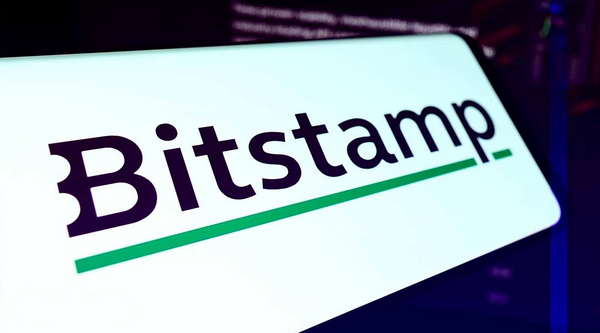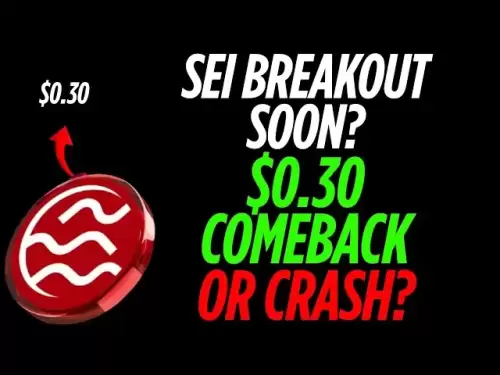-
 Bitcoin
Bitcoin $109,583.2239
0.19% -
 Ethereum
Ethereum $2,583.4612
0.48% -
 Tether USDt
Tether USDt $1.0003
-0.04% -
 XRP
XRP $2.2681
0.70% -
 BNB
BNB $659.9218
-0.52% -
 Solana
Solana $151.4961
-0.37% -
 USDC
USDC $0.9999
-0.02% -
 TRON
TRON $0.2861
1.20% -
 Dogecoin
Dogecoin $0.1718
0.04% -
 Cardano
Cardano $0.5960
-0.07% -
 Hyperliquid
Hyperliquid $40.1233
2.85% -
 Sui
Sui $2.9974
2.48% -
 Bitcoin Cash
Bitcoin Cash $497.1279
-1.76% -
 Chainlink
Chainlink $13.7275
-0.22% -
 UNUS SED LEO
UNUS SED LEO $9.0241
0.70% -
 Avalanche
Avalanche $18.5536
-0.88% -
 Stellar
Stellar $0.2421
1.39% -
 Toncoin
Toncoin $2.8593
-0.51% -
 Shiba Inu
Shiba Inu $0.0...01187
-0.07% -
 Litecoin
Litecoin $90.0023
2.90% -
 Hedera
Hedera $0.1590
2.79% -
 Monero
Monero $322.1495
0.00% -
 Polkadot
Polkadot $3.5453
-1.00% -
 Dai
Dai $1.0000
-0.01% -
 Bitget Token
Bitget Token $4.5733
-1.06% -
 Ethena USDe
Ethena USDe $1.0002
-0.01% -
 Uniswap
Uniswap $7.6345
3.03% -
 Aave
Aave $279.2583
0.47% -
 Pepe
Pepe $0.0...01003
-1.52% -
 Pi
Pi $0.4941
-0.32%
Bitstamp leverage shorting tutorial
To short an asset on Bitstamp, traders open a trading account, deposit funds, borrow funds, place a sell order, and monitor their position closely.
Nov 19, 2024 at 05:40 am

Bitstamp Leverage Shorting Tutorial
What is Leverage Shorting?
Leverage shorting is a trading strategy that allows traders to borrow funds to increase their buying or selling power. In the case of shorting, traders borrow funds to sell an asset with the intention of buying it back later at a lower price. If the asset's price falls, the trader can close their position and return the borrowed funds with a profit. However, if the asset's price rises, the trader will incur a loss.
Why Short an Asset?
Traders may choose to short an asset for a variety of reasons, including:
- To profit from a decline in the asset's price.
- To hedge against potential losses in a long position.
- To speculate on the direction of the market.
Risks of Leverage Shorting
Leverage shorting can amplify profits, but it also carries significant risks. These risks include:
- Liquidation: If the asset's price rises too quickly, the trader's position may be liquidated to cover the borrowed funds.
- Unlimited Loss Potential: Unlike long positions, short positions have unlimited loss potential.
- Margin Calls: If the equity in the trader's account falls below a certain level, the trader may receive a margin call and be forced to sell their position.
How to Short an Asset on Bitstamp
To short an asset on Bitstamp, traders will need to:
- Open a Bitstamp Trading Account: If you do not already have a Bitstamp trading account, you will need to create one.
- Deposit Funds: Deposit funds into your trading account to cover the margin required for the short position.
- Borrow Funds: Borrow funds from Bitstamp to increase your buying or selling power.
- Place a Short Order: Place a sell order for the asset you wish to short.
- Monitor Your Position: Monitor your position closely to manage your risk.
Step 1: Open a Bitstamp Trading Account
To open a Bitstamp trading account, visit the Bitstamp website and click on the "Register" button. You will be asked to provide your personal information, including your name, email address, and password. Once you have provided this information, you will need to verify your email address and identity.
Step 2: Deposit Funds
To deposit funds into your trading account, click on the "Deposit" button in the top right corner of the Bitstamp website. You will be given a variety of options for depositing funds, including bank wire, credit card, and cryptocurrency.
Step 3: Borrow Funds
To borrow funds from Bitstamp, click on the "Borrow" tab in the left-hand menu of the Bitstamp website. You will be given a list of assets that you can borrow, as well as the interest rates and maximum loan amounts for each asset.
Step 4: Place a Short Order
To place a short order, click on the "Trade" tab in the left-hand menu of the Bitstamp website. You will be given a list of all the assets that you can trade on Bitstamp. Find the asset that you wish to short and click on the "Sell" button. You will be asked to enter the amount of the asset that you wish to sell short.
Step 5: Monitor Your Position
Once you have placed a short order, it is important to monitor your position closely. You should track the asset's price and your equity in the trade. If the asset's price rises too quickly, you may need to close your position to avoid liquidation.
Conclusion
Leverage shorting can be a powerful trading strategy, but it is also important to understand the risks involved. Before shorting an asset, traders should carefully consider their risk tolerance and make sure that they have a sound trading plan.
Disclaimer:info@kdj.com
The information provided is not trading advice. kdj.com does not assume any responsibility for any investments made based on the information provided in this article. Cryptocurrencies are highly volatile and it is highly recommended that you invest with caution after thorough research!
If you believe that the content used on this website infringes your copyright, please contact us immediately (info@kdj.com) and we will delete it promptly.
- Samsung's Semiconductor Strategy: Demand Dilemmas and Future Directions
- 2025-07-04 04:30:13
- Gem, Cardano, Price Increase: What's Driving the Crypto Buzz?
- 2025-07-04 04:30:13
- Inside the Crypto Ecosystem: Big Eyes Crypto's Purr-fect Blend of Memes and Marine Conservation
- 2025-07-04 04:50:13
- Nano Labs, BNB, and a $1B War Chest: A New York Minute on Crypto's Latest Power Play
- 2025-07-04 04:35:12
- Crypto's Wild Ride: TOKEN6900, SPX6900, and the S&P 500 Connection
- 2025-07-04 03:50:13
- Pepe Unchained Price Rebound Hopes Dwindle Amidst Weak Volume
- 2025-07-04 03:55:13
Related knowledge

How to identify the contract value range in combination with the market profile?
Jul 02,2025 at 10:56pm
Understanding the Market ProfileTo effectively identify the contract value range in combination with the market profile, it's essential to first understand what each concept entails. The market profile is a framework that helps traders visualize how price and time interact across a given period, typically a trading day or session. It provides insights i...

How to use the price slope to filter the false breakthrough signal of the contract?
Jun 20,2025 at 06:56pm
Understanding the Concept of Price Slope in Contract TradingIn contract trading, especially within cryptocurrency derivatives markets, price slope refers to the rate at which the price changes over a specific time period. It helps traders assess the strength and sustainability of a trend. A steep slope may indicate strong momentum, while a shallow slope...

How to determine the expected volatility of the contract through the volatility cone?
Jun 19,2025 at 12:28pm
Understanding the Basics of Volatility in Cryptocurrency ContractsIn the realm of cryptocurrency trading, volatility is a key metric that traders use to assess potential risk and reward. When dealing with futures contracts, understanding how volatile an asset might become over time is crucial for position sizing, risk management, and strategy developmen...

How to formulate a contract intraday trading plan in combination with the pivot point system?
Jun 21,2025 at 03:42pm
Understanding the Basics of Pivot Points in Cryptocurrency TradingPivot points are technical analysis tools used by traders to identify potential support and resistance levels. These levels are calculated using the previous day's high, low, and closing prices. In the context of cryptocurrency trading, where markets operate 24/7, pivot points help trader...

How to adjust the contract position ratio through the price fluctuation entropy?
Jun 22,2025 at 11:42am
Understanding Price Fluctuation Entropy in Cryptocurrency ContractsIn the world of cryptocurrency futures trading, price fluctuation entropy is a relatively new concept used to measure market volatility and uncertainty. It derives from information theory, where entropy refers to the degree of randomness or unpredictability in a system. In crypto contrac...

How to use the volume swing indicator to predict the contract volume-price divergence?
Jun 18,2025 at 11:42pm
Understanding the Volume Swing IndicatorThe volume swing indicator is a technical analysis tool used primarily in cryptocurrency trading to evaluate changes in volume over time. Unlike price-based indicators, this metric focuses solely on trading volume, which can provide early signals about potential market reversals or continuations. The key idea behi...

How to identify the contract value range in combination with the market profile?
Jul 02,2025 at 10:56pm
Understanding the Market ProfileTo effectively identify the contract value range in combination with the market profile, it's essential to first understand what each concept entails. The market profile is a framework that helps traders visualize how price and time interact across a given period, typically a trading day or session. It provides insights i...

How to use the price slope to filter the false breakthrough signal of the contract?
Jun 20,2025 at 06:56pm
Understanding the Concept of Price Slope in Contract TradingIn contract trading, especially within cryptocurrency derivatives markets, price slope refers to the rate at which the price changes over a specific time period. It helps traders assess the strength and sustainability of a trend. A steep slope may indicate strong momentum, while a shallow slope...

How to determine the expected volatility of the contract through the volatility cone?
Jun 19,2025 at 12:28pm
Understanding the Basics of Volatility in Cryptocurrency ContractsIn the realm of cryptocurrency trading, volatility is a key metric that traders use to assess potential risk and reward. When dealing with futures contracts, understanding how volatile an asset might become over time is crucial for position sizing, risk management, and strategy developmen...

How to formulate a contract intraday trading plan in combination with the pivot point system?
Jun 21,2025 at 03:42pm
Understanding the Basics of Pivot Points in Cryptocurrency TradingPivot points are technical analysis tools used by traders to identify potential support and resistance levels. These levels are calculated using the previous day's high, low, and closing prices. In the context of cryptocurrency trading, where markets operate 24/7, pivot points help trader...

How to adjust the contract position ratio through the price fluctuation entropy?
Jun 22,2025 at 11:42am
Understanding Price Fluctuation Entropy in Cryptocurrency ContractsIn the world of cryptocurrency futures trading, price fluctuation entropy is a relatively new concept used to measure market volatility and uncertainty. It derives from information theory, where entropy refers to the degree of randomness or unpredictability in a system. In crypto contrac...

How to use the volume swing indicator to predict the contract volume-price divergence?
Jun 18,2025 at 11:42pm
Understanding the Volume Swing IndicatorThe volume swing indicator is a technical analysis tool used primarily in cryptocurrency trading to evaluate changes in volume over time. Unlike price-based indicators, this metric focuses solely on trading volume, which can provide early signals about potential market reversals or continuations. The key idea behi...
See all articles

























































































